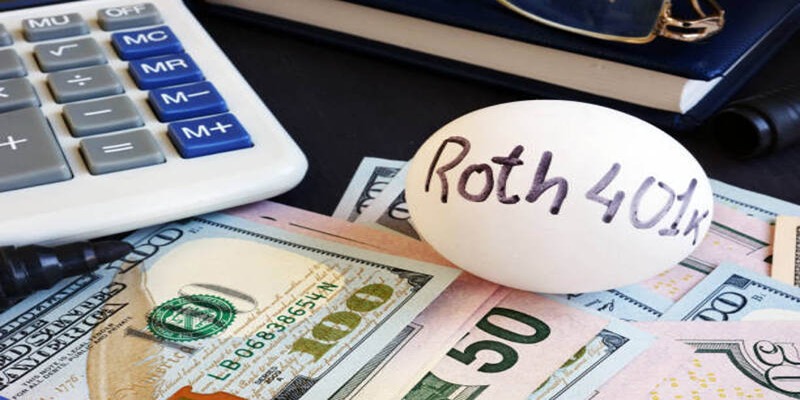
How to Invest in Gold and Precious Metals

The Role of AI in Financial Planning

How to Use Digital Wallets for Secure Transactions

The Financial Impact of Social Comparisons
The Benefits of Investing in High-Dividend Stocks
Apr 24, 2025 By Juliana Daniel
Why High-Dividend Stocks Are a Smart Investment Choice
Investing in high-dividend stocks has long been a favored strategy for those seeking steady income and long-term growth. These stocks, typically issued by well-established companies, offer regular payouts to shareholders, making them an attractive option for both conservative and aggressive investors. Beyond the immediate financial benefits, high-dividend stocks provide a sense of stability, especially during volatile market conditions. This section explores the foundational reasons why high-dividend stocks are a smart addition to any investment portfolio.
Understanding Dividends: What They Are and How They Work
Dividends are payments made by a corporation to its shareholders, usually derived from the company’s profits. They can be issued in the form of cash, additional shares, or other assets. High-dividend stocks are those that consistently offer higher-than-average payouts compared to other stocks. Understanding how dividends work is crucial for investors, as it helps them assess the reliability and sustainability of these payouts. This section breaks down the mechanics of dividends and what investors should look for when evaluating high-dividend stocks.
The Role of High-Dividend Stocks in Portfolio Diversification
Diversification is a cornerstone of sound investment strategy, and high-dividend stocks play a vital role in achieving it. By including these stocks in a portfolio, investors can balance risk and reward, especially when combined with growth stocks or bonds. High-dividend stocks often belong to sectors like utilities, consumer staples, and healthcare, which tend to be less volatile. This section explains how high-dividend stocks can enhance portfolio diversification and reduce overall risk.
Tax Advantages of Investing in High-Dividend Stocks
One of the often-overlooked benefits of high-dividend stocks is their favorable tax treatment. In many jurisdictions, dividends are taxed at a lower rate than ordinary income, making them a tax-efficient way to generate returns. Additionally, qualified dividends may qualify for even lower tax rates, depending on the investor’s income level. This section delves into the tax advantages of high-dividend stocks and how investors can maximize their after-tax returns.
High-Dividend Stocks as a Hedge Against Inflation
Inflation can erode the value of investments over time, but high-dividend stocks can serve as a hedge against this risk. Companies that consistently pay dividends often have the ability to raise their payouts in line with inflation, preserving the purchasing power of their shareholders. This section explores how high-dividend stocks can protect investors from the adverse effects of inflation and maintain their long-term financial goals.
Evaluating the Sustainability of High-Dividend Payouts
While high-dividend stocks offer attractive returns, it’s essential to assess the sustainability of these payouts. Factors such as the company’s earnings, cash flow, and payout ratio play a critical role in determining whether a dividend is sustainable in the long term. This section provides a framework for evaluating the financial health of high-dividend companies and ensuring that their payouts are reliable.
Historical Performance of High-Dividend Stocks
Historical data shows that high-dividend stocks have consistently outperformed non-dividend-paying stocks over the long term. This performance is attributed to the compounding effect of reinvested dividends and the stability of dividend-paying companies. This section examines the historical performance of high-dividend stocks and what it means for investors looking to build wealth over time.
Risks Associated with High-Dividend Stocks
While high-dividend stocks offer numerous benefits, they are not without risks. Factors such as economic downturns, sector-specific challenges, and changes in company performance can impact dividend payouts. This section outlines the potential risks of investing in high-dividend stocks and how investors can mitigate them through careful research and diversification.
How to Identify the Best High-Dividend Stocks
Identifying the best high-dividend stocks requires a combination of fundamental analysis and market research. Key metrics to consider include dividend yield, payout ratio, and the company’s growth prospects. This section provides a step-by-step guide to selecting high-dividend stocks that align with an investor’s financial goals and risk tolerance.
The Future of High-Dividend Stocks in a Changing Economy
As the global economy evolves, so too does the landscape for high-dividend stocks. Emerging trends such as technological advancements, environmental sustainability, and shifting consumer preferences are influencing the sectors that traditionally offer high dividends. This section explores the future of high-dividend stocks and how investors can adapt to these changes to continue reaping the benefits.

How Blockchain is Revolutionizing Finance

A Comprehensive Guide to Trading Options in Roth IRAs

The Benefits of Investing in High-Dividend Stocks

The Pros and Cons of Digital Banking

Discovering the Charm of Deià: A Travel Guide to Mallorca’s Hidden Gem

The Role of Artificial Intelligence in Portfolio Management

The Pros and Cons of Margin Trading

How to Choose the Right Hostel: 6 Tips to Avoid Bad Stays
Advertisement
